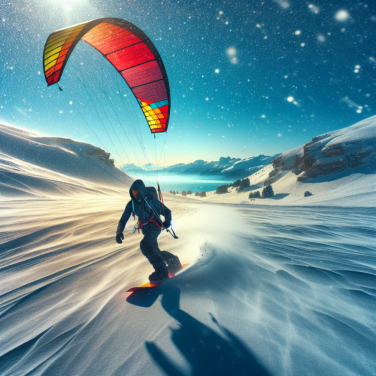Equipment Optimization: Choosing the Right Gear for Competitive Downhill Racing
Downhill racing, a sport where every millisecond counts, demands not only exceptional skill and nerve but also relies heavily on the gear and equipment a racer chooses. It's an undeniable fact that the right equipment can significantly enhance performance and give racers an edge over their competitors.
When selecting downhill racing equipment, one of the most critical choices is the bike itself. Competitive downhill bikes are engineered to withstand the rigorous demands of racing down steep terrains at high speeds. These bikes typically come with full suspension systems that provide greater control and absorb the shock of uneven, rocky trails. The frame geometry is designed to tackle steep descents, featuring a slacked head angle for stability and a lower center of gravity to improve handling. Racers should seek lightweight yet durable frames—often made from carbon fiber or high-grade aluminum—to ensure optimal maneuverability and speed.
Suspension is another crucial factor in downhill racing. A quality suspension setup will improve traction and control over rough terrain. Adjustable suspension components allow racers to fine-tune their bikes for different courses and conditions, enabling them to optimize their ride for both compliance and responsiveness. High-performance shocks that offer a range of adjustments for rebound and compression damping can make a significant difference to the bike's handling on varying terrain.
Tires are where the bike meets the trail, so their selection is imperative for downhill racing success. Downhill tires should provide excellent grip and be robust enough to avoid punctures and tears at high speeds over sharp rocks and roots. A wider tire with a soft, sticky compound and aggressive tread pattern will help maintain traction in loose or wet conditions. However, racers must balance the need for grip against rolling resistance, as a tire that's too knobby or soft may slow them down on less technical track sections.
Braking systems in downhill racing bikes also cannot be overlooked. High-quality disc brakes with large rotors offer the stopping power needed to navigate the steep, technical descents safely. Decent heat dissipation is essential to reduce the likelihood of brake fade during prolonged use. Some racers may prefer the modulation and feel of hydraulic brakes over mechanical ones, as consistent braking performance is a must for maintaining control at speed.
Mountain biking protective gear should also be chosen with care. A full-face helmet, body armor, gloves, and knee and elbow pads are fortified against the impact and abrasion hazard inherent to downhill racing.
Read also:
Mastering the Art of Stone Skipping: A How-To Guide
Navigating the Slopes: Techniques for Supreme Speed Control
As you continue your journey towards mastering the exhilarating world of downhill racing, a vital skill to refine is your ability to control speed with precision. Speed control is not solely about safety; it's also about maximizing your efficiency and agility as you navigate various terrains. Here, we delve into the techniques that can help you achieve supreme speed control on the slopes.
Carving is the cornerstone of maintaining and controlling speed in downhill racing. It involves tilting the skis onto their edges, allowing the shape of the ski to guide your turn. Carve each turn with a focus on smoothness and consistency, ensuring that you're not skidding, which can lead to unnecessary speed loss.
Pressure management on your skis is another critical aspect. Expert racers modulate the pressure exerted on their skis throughout each turn. By applying more pressure at the start of the turn and easing off as you exit, you effectively pump the terrain, much like a cyclist does over rolling hills. This technique allows you to maintain speed without letting it escalate beyond your control.
In addition to carving and pressure management, the pole plant is a strategic element that aids in timing and balance. A well-timed pole plant offers stability and marks the initiation point of your next turn. Use this as a rhythmic element to create a consistent pattern in your descent, which helps in modulating your speed.
Another element of speed control is your stance. A balanced, forward stance allows you to react quickly to changes in the terrain and maintain agility. Keep your knees flexed and your body centered over your skis. This position empowers you to absorb variations in the snow and to adjust your body weight accordingly to control your velocity.
Anticipating the terrain plays a crucial role as well. By reading the slope ahead, you can plan your line and turns in advance, making smooth transitions that help preserve speed while staying in command. Recognize sections where you can let gravity do its work and areas where you need to apply braking techniques, such as skidding or scrubbing speed with sharper, controlled turns.
Lastly, don't overlook the psychological aspect of speed control. Fear can lead to tension, and tense muscles can hinder your ability to make fluid, controlled movements. Cultivate confidence through practice, visualization, and by gradually pushing your limits. As you gain more confidence, your body stays relaxed, enabling more precise and controlled movements at high speeds.




